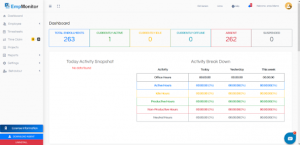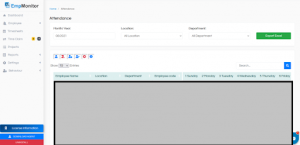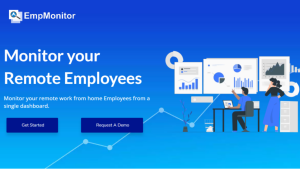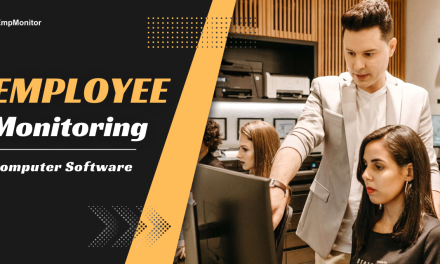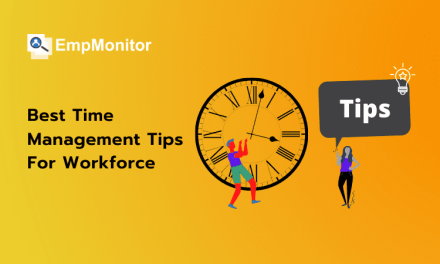Employee productivity tracking is one of the most time-consuming responsibilities in any organization. However, managing workload with a staff of dozens to hundreds of individuals can be challenging to make any significant headway toward improving overall performance.
So, what’s the best approach one can have to explore more possibilities to increase productivity?
According to the 80/20 rule, 20% of one’s efforts are accountable for 80% of the intended results. Well, this does not only sound great but also works like a miracle if implemented in the right direction.
Applying this rule in the workplace efficiently allows you to streamline your work and increase productivity. It helps you to minimize the effort of managing workload on overall staff turnover rates while managing workload and raising overall productivity levels of the organization.
So, let’s check out the 80/20 Rule.
HIT THE PLAY BUTTON TO LISTEN:
Pareto Principle: A Brief Introduction
The Pareto principle is an economic phenomenon in which 80% of results are obtained by 20% of the work. While the figures aren’t always perfect, the notion is that the input-to-output ratio isn’t always 1:1. The Pareto principle is the ultimate “work smarter, not harder” strategy for managing workload. According to Pareto followers, the key to greater productivity is discovering and capitalizing on the 20% of efforts that creates 80% of the outcomes.
Reasons To Adhere 80/20 Rule
The 80/20 Rule Is An Excellent Tool For Prioritizing-
It’s like solving a puzzle to figure out whether your employee’s time is spent on the most productive tasks or they are just being unproductive. However, correlating particular actions to subsequent consequences- input to output – gives some factual data to help make better productivity or lifestyle decisions.
It Prevents From Wasting Time On The Wrong Things-
Studies have shown that many people unknowingly waste their time on unimportant activities that bring no achievement to them. It’s not only pure procrastination, but activities such as surfing social media or unrelated websites; we believe are constructive and don’t provide a good trade-off.
You must be wondering how the 80/20 rule can help your organization here. Right?
Well! With the 80/20 rule, one can learn to build that inner voice that arises to know when you are not spending your time wisely. You’ll be surprised at how quickly one can ease stewing in situations that reduce productivity.
Promotes High-Value Activities-
Third, just as Pareto’s law did not apply only to peas in his garden, it can now be applied to other elements of life such as health, relationships, and personal money. The 80/20 rule encourages focusing on high-value tasks at work, and it’s no different at home or in social situations.
How Do You Locate Your 20%?
To determine your 20%, you must first understand where your employees’ effort goes. Where are they spending their entire day? How much time do they devote to particular tasks? What all tasks require more time?
With managing workload tools, you can easily collect all of this data. Rather than human timers and input, software like EmpMonitor records the time your employees spend doing their daily work.
Right from the documents, apps, and websites you utilize, everything is shown in a clear timeline, allowing you to see where your employees’ efforts are heading.
Once you have this information, sift through it to find the lows- and highs, major diversions, and the amount of time your employees spend on each activity.
Not only this, but EmpMonitor also gives you access to tons of valuable features that will only ease your work in a jiffy. Let’s find out what are those.
Time Administration:
Believe it or not, many employees spend most of their time in team meetings, and such tasks are difficult to monitor. So try to track and eliminate the unproductive hours for better planning of your employees’ time.
With the time tracking feature of EmpMonitor, you can easily check your employees’ productive time, idle time, break hours, and more.
Robust Productivity Reports:
EmpMonitor generates extensive reports on productivity data using various filters and algorithms. This way you can get to know about the productive and unproductive employees.
Attendance Control:
With EmpMonitor, you can automatically generate ready-to-use reports for attendance and log hours every 30 days.
Employee Administration:
You can easily manage several systems and individuals from a single, centrally located network monitoring dashboard.
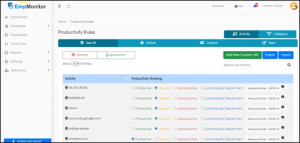
Take advantage of its free 15-day trial right away!
Now that you can smartly work your way through employee monitoring in a more organized way with EmpMonitor- let’s get back to how you can apply the 80/20 rule to your work effectively.
Applications Of The 80/20 Rule
As an employer, you wear several hats, including those of an administrator, accountant, director of business development, and everything in between. With so many competing demands and responsibilities, it may not be easy to remain on top of your duties and fulfill them without being utterly overwhelmed. It is when the Pareto principle comes into play.
When you grasp and use this productivity concept in your organization, you will be able to get more done with less effort—and catapult your employees’ productivity without adding stress to your life. But how precisely can you use this approach in your workplace to increase productivity?
Let’s find out.
01. Be Specific About The Task
To determine the most effective tasks, first, understand the task you enlist during the day, week, and month. Then try linking those acts to measurable outcomes.
So, if you observe that sending a follow-up email to your clients increases product purchases, then prioritize that activity. Any work that cannot be linked to a measurable outcome must be delegated to make place for objectively worthwhile acts.
02. Concentrate On Two Or Three Main Areas For Development At A Time
You may prevent distractions in a variety of ways, but the key is to keep your attention on the tasks at hand. But only if it were that simple.
So what’s the greatest approach to maintaining concentration? Well! Working on too many tasks at once might occasionally end up being risky. In simple terms, concentrate on your two or three main areas for development rather than attempting to fix everything at once. By doing so, you can make sure that the most crucial tasks are completed first and still have time for pleasure.
03. Wherever Practicable, Delegate, Outsource, & Automate
Knowing the Pareto principle aims to focus on the tasks that have the most significant impact while avoiding “the other” tasks.
However, something must be done about the other little duties. They can be left undone (if they have little impact or repercussions), in such cases transferred to subordinates, or even outsourced or automated.
That’s what a competent and well-organized employer does: they know their top priorities and which tasks to assign to which team members or perhaps avoid entirely.
04. Be Picky About The Things You Add To Your To-Do List
You may add any task to the list of tasks, but make sure that it is worth it. Being proactive entails being ruthless about the chores added to your to-do list, especially if others mandate those duties. Even if you have an urgent task, you know you have other more essential responsibilities, communicate calmly and explain your position to the other person.
Remember: Never allow someone to disturb you for more than a short while. Instead of being reactive with your time, be proactive. If not, you won’t accomplish as much, and your day will be destroyed.
05. Develop Action Items
Lastly- Priorities are good, but they won’t always bring you to the finish line. You must set SMART objectives, which are specific, measurable, achievable, realistic, and time-bound actions that will help you for managing workload.
These actions represent the actual 20% of the 80-20 rule; these are the activities you should focus on 20% of the time to get the best outcomes. Then, it would be helpful if you consider yourself responsible for them.
Adapting to something new is challenging, but with some effort, dedication, and smartness, one can surely get through. Try managing workload using these tips of the 80/20 rule and see the change yourself. If not all at once, take chances with a few ways and then decide for yourself.
To Know More, Watch Our YouTube Video :
How To Manage All The Employee Workplace Activities | EmpMonitor How-To Tutorial Series
The Pareto Principle: Key Points To Remember
Here are a few essential points to remember for managing workload using the 80/20 rule:
- According to the Pareto Principle, 20% of the inputs to a system typically create around 80% of the effects.
- Examples include top sales clients generating the highest income or your most productive 20% of the day resulting in 80% of your entire job production.
- Understanding which systems are affected by the Pareto rule provides insight into where more effort may be put to increase productivity.
- The Pareto effect does not apply to all systems, and it is crucial to employ critical thinking to identify which ones it does or should use and which it does not or should not.
Find Your 80/20, & Get 100% Out of Your Day,
The 80/20 rule increases productivity and assists you in developing more vital self-management and task management skills as an entrepreneur. Remember that the 80/20 rule is not meant to make you work less; rather, it’s intended to help you work smarter.
You must spend your energy correctly because there are only 24 hours a day and managing workload is a very difficult and time-consuming task. Whether you’re increasing your efforts with your 20% clients, outsourcing chores to dedicate more time to your highly successful digital marketing, or just tending your thriving pea plants, the fact stays the same: your critical 20% will get you closer to your goals.
Hopefully, the 80/20 rule answers your all queries about- why is effectively managing my workload important?



